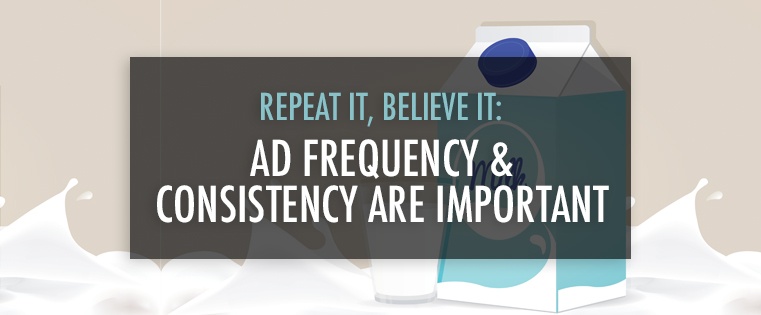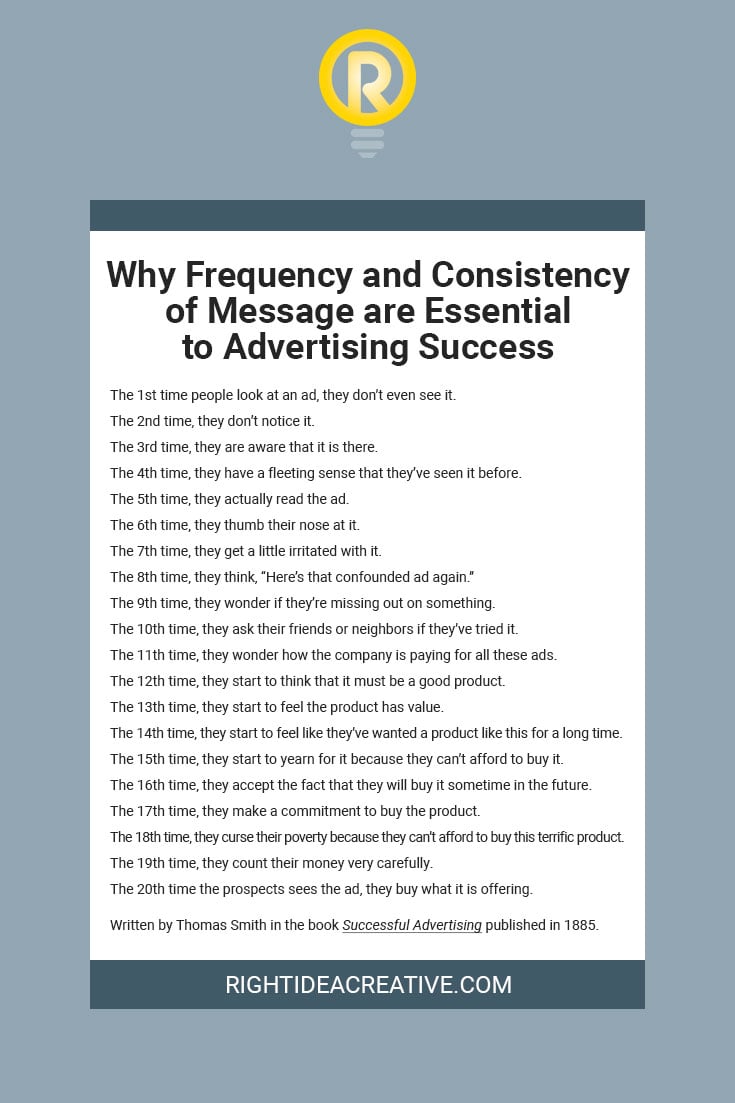
You’ve heard the saying, “Too much of anything is bad….” But, what if that’s wrong? What if too much of something is just enough to hook even the most doubtful critics.
Below are slogans that have been used over and over and over and over again, and we still haven’t had enough.
- Breakfast of Champions (since 1927)
- Snap! Crackle! Pop! (since 1929)
- Mmm..Mmm..Good (since 1935)
- A Diamond is Forever (since 1948)
- Melts in your mouth, not in your hands. (since 1954)
- Finger lickin’ good! (since 1956)
- Betcha can’t eat just one! (since 1960s)
- The Quicker Picker Upper. (since 1960s)
- Like a Good Neighbor, State Farm is there. (since 1971)
- The Few. The Proud. The Marines. (since 1977)
- Keeps going and going and going. (since 1988)
- Got milk? (since 1993)
- Hungry? Grab a Snickers. (Original form began 1995, tweaked years later)
- There are some things money can’t buy. For everything else, there’s MasterCard. (since 1997)
- Think Different. (since 1997)
- Imagination at Work. (since 2000)
- I’m lovin’ it. (since 2003)
- What happens here, stays here. (since 2004)
- America Runs on Dunkin. (since 2006)
We’ve heard some of these slogans hundreds of times. Why is it that they’re still effective? Because as consumers, we love frequency and consistency. At a time when advertising was in its early beginnings, Thomas Smith cut to the core of audiences and the importance of seeing ads frequently and consistently:
The 1st time people look at ad, they don’t see it.
The 2nd time, they don’t notice it.
The 3rd time, they are aware that it is there.
The 4th time, they have a fleeting sense that they’ve seen it before.
The 5th time, they actually read the ad.
The 6th time, they thumb their nose at it.
The 7th time, they get a little irritated with it.
The 8th time, they think, “Here’s that confounded ad again.”
The 9th time, they wonder if they’re missing out on something.
The 10th time, they ask their friends or neighbors if they’ve tried it.
The 11th time, they wonder how the company is paying for all these ads.
The 12th time, they start to think that it must be a good product.
The 13th time, they start to feel the product has value.
The 14th time, they start to feel like they’ve wanted a product like this for a long time.
The 15th time, they start to yearn for it because they can’t afford to buy it.
The 16th time, they accept the fact that they will buy it sometime in the future.
The 17th time, they make a commitment to buy the product.
The 18th time, they curse their poverty because they can’t buy this terrific product.
The 19th time, they count their money very carefully.
The 20th time prospects see the ad, they buy what it is offering.
Keep in mind, Smith wrote this in 1885. Over 130 years ago. And it’s perfectly applicable yesterday, today, and will be useful tomorrow. We’ve come a long way in the advertising business since 1885, but when you get to the bare bones, times haven’t changed.
The timeless slogans prove Smith’s exact point: the more (times it’s heard) the merrier.






